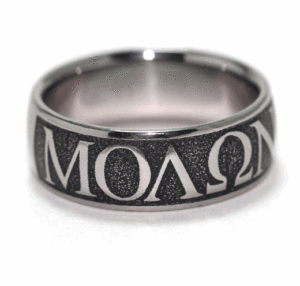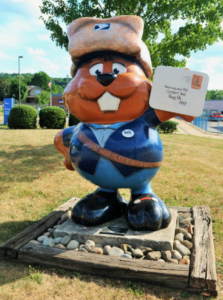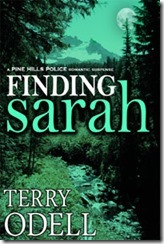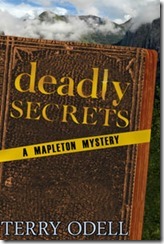
Let us welcome our Anonymous du jour today, who has bravely and graciously submitted the beginning of ORIGINS: JOHN SPARTAN (1965) for our First Page Critique:
Father Angelo was lost in a good book and a glass of wine. A fire crackled in the fireplace sending shadows dancing across the walls and ceiling. The winter storm shook the windows and wind howled as lightning tore at the dark skies. It was a bad night to be outdoors. But indoors it was safe, St. Luke’s shrugged the east Virginia storm off like a knight in dark armor. Clad for battle and standing ever vigilant. The Old Brick Church had been standing since 1820.
A knock at his door interrupted his reverie of times past and he called out, “Come in.” Thomas, the resident groundskeeper cradled a sodden bundle in his arms. A basket wrapped in oilskin. Thomas looked like he was confused so Father Angelo motioned him over to the desk as he cleared a place for him to set the bundle down.
“I heard a knock at the vestry door on the south wall Father.” said Thomas. “When I opened the door this was sitting on the stoop. There was no one to be seen. I called out but no one answered me. They left him to us.”
Father Angelo’s eyes widened as he arched a brow, “Him?”
“Yes Father, a baby boy.” said Thomas.
Father Angelo carefully pulled the flap aside and the bluest eyes he had ever seen gazed back at him. The child was swaddled in rough burlap and wool blanketing. He noticed a card in the folds and pulled it out to read it. The card was hand written in precise Greek lettering,ΜΟΛΩΝ ΛΑΒΕ.
“What does it say Father?” asked Thomas.
“Molon laveh, it means ‘Come and take it’ in Greek” Father Angelo explained. “When the Persian King Xerxes demanded King Leonidas of Sparta to surrender their weapons at the Battle of Thermopylae King Leonidas replied, “Molon lave! Come take them!”
As he watched the infant he realized the child was not crying but gazing back at him. He sensed an intelligence in the child. There was no fear, only a keen curiosity.
“What do we do Father? How will we take care of him?” asked Thomas
“It appears our little Spartan has planned ahead.” said Father Angelo as he lifted the baby from the basket. Layered inside was bundle upon bundle of US money. More money than he had ever seen in one place.
“Holy cats Father! That will surely keep the little man in milk and diapers!” exclaimed Thomas.
Both men jumped when a white gold ring dropped from the swaddling and rang out in the purest tone as it bounced across the desk then settled into a lazy circle before stopping. The ring was engraved with more Greek symbols inside and out.
How many more mysteries can my heart take tonight? Father Angelo wondered as a bolt of lightning hit just outside followed by a deafening thunder clap. Both men were visibly startled but, the baby simply gazed outside at the ferocity of nature’s fury. There was no fear, only a keen curiosity.
Father Angelo crossed himself as he breathed a prayer.
All right, TKZers. Let’s begin with some general and positive comments. Anonymous gets points here for immediately setting time and place. I’m always surprised at how many authors don’t and make the reader work for it. There is also some good, even impressive, pacing here. I never had the sense that the narrative was flying off in two or three different directions or that too much was being introduced, nor did I feel that things were dragging at any particular point. Anonymous takes a familiar incident — a baby left at a stranger’s door — and plays with it just a bit here. My interest was piqued, and it still is. I hope Anonymous keeps going with this story. I really wanted a second page to pop up.
Are there areas for improvement? Sure. There are a couple of speed bumps — as opposed to potholes — in the narrative which slow things down just a bit (as opposed to breaking the story’s axle) and which can easily be fixed. There are also a couple of other problems which are easily correctable with a proofreader and a dictionary. I additionally have a suggestion for an addition which might make the story more interesting. Let’s proceed.
SPEEDBUMPS: These occur in the first paragraph, interestingly enough. The sentences for the most part are terrific but they’re (mostly) in the wrong order. ORIGINS were a movie the camera would be cutting in and out of what I am assuming is Father Angelo’s rectory (we’re never really told). Remember the opening lyrics to the song “Let It Snow.” It begins by telling us that it’s frightful outside but delightful inside. If you reverse those, it doesn’t work quite as well. I suggest taking the readers by the hand and leading them from outside to inside. While doing that, tell us just a bit about where “inside” is, and, oh yeah…don’t use the same noun twice (“storm”) in this short paragraph. I’m suggesting something like this, with my additions in boldface:
St. Luke’s shrugged the east Virginia storm off like a knight in dark armor. The building known as “The Old Brick Church” had been standing since 1820, clad for battle and standing ever vigilant.The winter squall shook the windows and wind howled as lightning tore at the dark skies. It was a bad night to be outdoors, but indoors it was safe. A fire crackled in the fireplace of the rectory den, sending shadows dancing across the walls and ceiling, while Father Angelo relaxed, lost in a good book and a glass of wine.
Also…Anonymous, please frame the scene, just a bit. please tell us if it’s snowing or raining. It can do either during the winter in eastern Virginia. As those of us in Ohio know well, it can lightning and thunder during a snowstorm. Please also describe the rectory den or living room where Father Angelo is relaxing. Thomas is later going to be directed to set the bundle on “the desk.” What desk? Have Father Angelo direct Thomas to a large antique rolltop desk, a partner’s desk, or something/anything like that so that we can get a better sense of what the scene look like.
Errors — Some proofreading is in order. Take it from the World’s Worst Proofreader (me). I’m counting several, most involving the omission of a comma where there should be one. The most obvious ones occur when Thomas is speaking to Father Angelo. “I heard a knock at the vestry door on the south wall, Father,” “What do we do, Father?” and “Holy cats, Father!” to name but three. There are others, involving missing commas, misplaced commas and a run-on sentence or two. Get someone to proofread for you with special attention to punctuation. Oh, and in case anyone is wondering, Thomas does not say “Father” too often. It was as common in the 1960s to say “Father” in every sentence directed to a priest as it is to say “SIR!” in the Marines.
— molon laveh, molon lave, molon labe: I don’t want to get into a “you say tomato, I say tomahto” discussion but Anonymous spells “molon labe” two different ways here, “molon laveh ” and “molon lave”. The correct English spelling in English is “molon labe.” The pronunciation in attic Greek would be “molon labe” with a hard ‘b’; in modern Greek it would be “molon lave,” which may be what Anonymous is trying to convey. Spelling aside, I think that Father Angelo would correctly use the attic Greek pronunciation, given that he was describing Leonidas’ response to Xerxes, which was spoken well over two millennia ago. Also, Anonymous should be italicizing “molon labe” in the manuscript. Did I spend too much time on that? Maybe, but there are folks out there who will climb straight up your backside over that particular error. Anonymous gets points for spelling the phrase correctly when using Greek lettering.
— Anonymous uses sentence fragments occasionally. I think that these are stylistically deliberate, rather than grammatical errors. Cormac McCarthy, to name but one, utilizes fragments to great effect. These would be fine, all other things being equal, I found them to be a bit of a distraction but that says more about my own preference than anything else.
Suggestions — Consider a Prologue, describing how Little John would up on the church doorstep. Give us a bit of insight into the thoughts of the person who left him there. You can also describe how really, really, frigging cold it can get at night during a Virginia winter.
— There’s no need to go overboard at all on this but perhaps a bit of a description of Father Angelo and Thomas would be in order. I had no problem visualizing either, since I was practicing Catholic during the time period, but some of the readers might.
— St. Luke’s is a real church in a real place. You may want to consider using a fictitious church with a different name in a similar location which people might recognize as St. Luke’s but which won’t be specifically identified as St. Luke’s. That way you can avoid having a notice of excommunication nailed on your door!
Thank you, Anonymous, for submitting your work. Be not discouraged, but encouraged. This story has good bones and you have a great sense of pacing. I also detect a great story on the way. I hope you’ll let us see it when it’s complete. Good luck!
As for our readers: does ORIGINS: JOHN SPARTAN pique your interest? Were you disappointed that there weren’t more pages? Do you have any additional suggestions?









